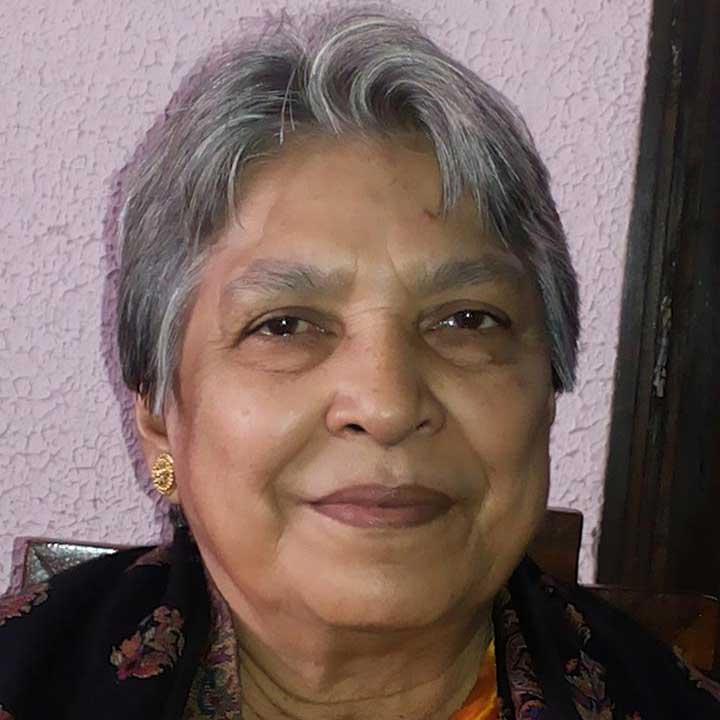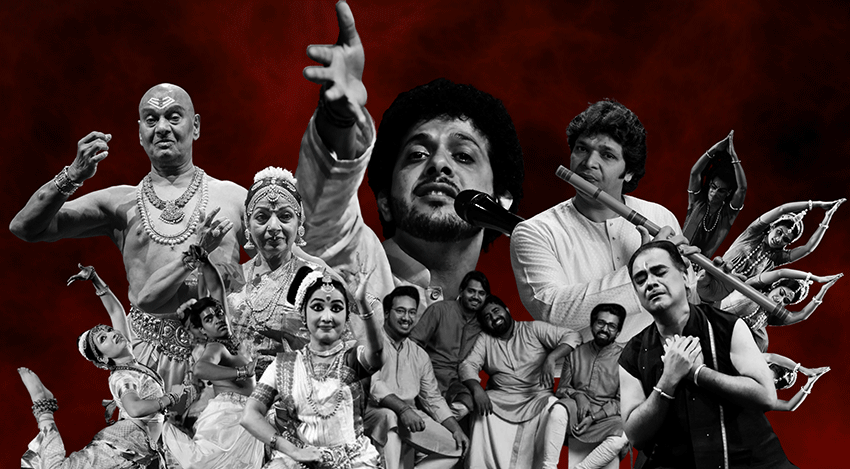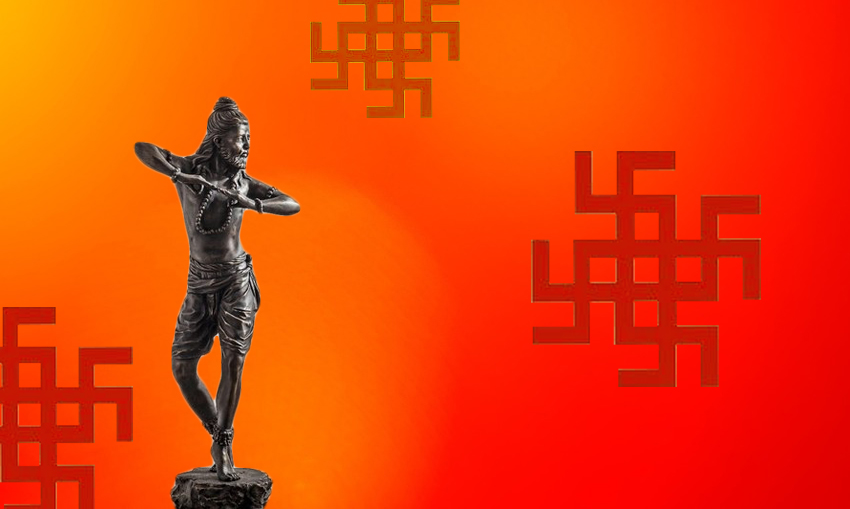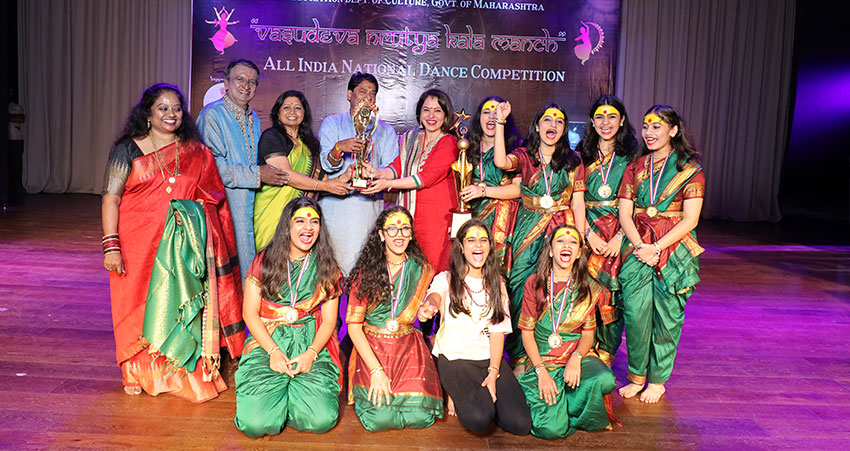As a part of celebrations of the birth centenary year of Manipuri Doyen Guru Bipin Singh, Manipuri Nartanalaya recently concluded a Workshop of Manipuri Dance in Kolkata.
Founded in 1972 by Guru Bipin Singh along with disciples Guru Kalavati Devi and Jhaveri Sisters, Manipuri Nartanalaya has its branches in Kolkata, Mumbai and Imphal (Manipur) and carries out manifold activities in the field of research, publication, creative pursuits and performances.
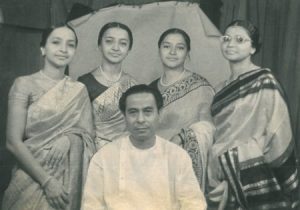
The workshop was taken by Padmashri Darshana Jhaveri herself, who is also the only Non-Manipuri to dedicate herself to bring Manipuri Dance from the temple precincts to the proscenium stage.
Darshana Jhaveri (one of Jhaveri Sisters), who has been looking after Manipuri Nartanalaya, Together with her Guru, has established effective methods of training aspirants of Manipuri dance.
Darshana ji took time spoke to Tapati Chowdhurie for ClassicalClaps and beaming with pride and full of enthusiasm she said, “We started our celebrations of guruji’s centenary year on his birthday on 23 August. We went to Silchar in Assam, which is guruji’s birthplace. For seven consecutive days, we had daily programmes of dance and music there. In between, we had sporadic performances in Kolkata. On January 9th and 10th, a two day festival of dance was held at Rabindranath Tagore Centre of ICCR, in which students from all over the globe performed Guruji’s memorable choreographic compositions.”
“The festival not only had guruji’s students perform, it also gave a platform to disciples they are nurturing. One actually got a chance to see the guru-shishya-parampara at work”, she added.
Jhaveri informed that renowned Manipuri exponent Latasana Devi came all the way from Mumbai and performed a duet with Poushali Chatterjee. Among the well-known performers who took the stage that evening were Kuhelika, Soma, Saswata, Indrani, Sraboni, Mousumi, Nilanjana, Rikhia, Tamanna and others.
Darshana Jhaveri seemed all excited about the Seminar that took place on Guru Bipin Singh’s style of Manipuri dance and its uniqueness, on the 14th of February at Asiatic Society.
Present in the seminar to throw light on Guru Bipin Singh’s work were critics like Dr. Sunil Kothari and Leela Venkatraman. Upendra Sharma, Director – Jawaharlal Manipuri Dance Academy, Debjani Chaliha Manipuri exponent, teacher, scholar cum writer were there along with Guruji’s disciple Kalavati Devi, his wife and others.
Through lecture demonstrations at the seminar, Darshana Jhaveri showed the speciality in the basic form and movements according to the basic chhanda of the syllables of the drum, as developed and practised by her guru. This could actually be divided into three segments, eye and neck movements; and then body movements; followed by movements of the feet.

“I showed each and every aspect of Krishna and Tandava and how Guruji interpreted in dance each of the movements and rhythm patterns. His inspiration from Pung Cholom (Pung is the Manipuri drum) gave birth to the idea of his Krishna Tandava, which he named “Mridu Uddhata Nartan”. He made use of the soft as well as the forceful dance of Pung Cholom and Kartal Cholom and acrobatic movements as danced by Krishna and Radha. He drew from ‘Bajikat Khel’ which is one among the 12 guises”, said Darshana ji.
Darshana ji also shared about ‘Achouba Bhangi’ in Taal Rajmel of 7 beats and 2 stresses and how the torso movement complemented the taal during her lec-dem.
According to Darshana ji “Guruji was a master of tala or rhythm and I explained the angas and divisions of the tala system he created. He believed that a dancer must learn to play the drum and adopt the ‘maru manao’ style of playing the drum with both hands.”
After explaining Manipuri tala system as envisioned by Guru Bipin Singh, Darshana Jhaveri showed the intricacies of Prabandha-the three elements of the musical system like pada-pata-swara-lyric, syllables and musical notes. She said, “We displayed swara prabandha in raag Bhoopali, which was adapted from Natapala starting with mridanga raag as a prologue and the raag alap from Bhoopali, before going into the actual subject of Swara Tal.”
She spoke at length about the other rhythm patterns. In some bits, Sruti Bandopadhyay performed while Kalavati Devi and Atoshi Chatterjee sang. Darshana performed Ananga Akshep; Nayika bheda-manini Radha as vipralabdha and khandita. She performed in Natashai style which is unique in highlighting the separation of Radha.
Darshana ji tried to cover the classical elements of guruji, he had imbibed from his Guru Amudan Sharma.”
Preeti Patel, another disciple of Guru Bipin Singh also demonstrated how in cholom, guruji interpreted the tandava style, while Poushali Chatterjee demonstrated Lakshmi taal.
Debjani Chaliha, a disciple of Guru Amubi Singh spoke on guruji’s abhinaya.
Darshana Jhaveri considered herself lucky for being the recipient of this year’s prestigious Kalidas Samman given by the Government of Madhya Pradesh. Guru Bipin Singh himself had been awarded the Kalidas Samman in the year 1989.
“When we are celebrating his centenary the Kalidas Samman has come like a blessing from him.” Said Darshana Jhaveri.




